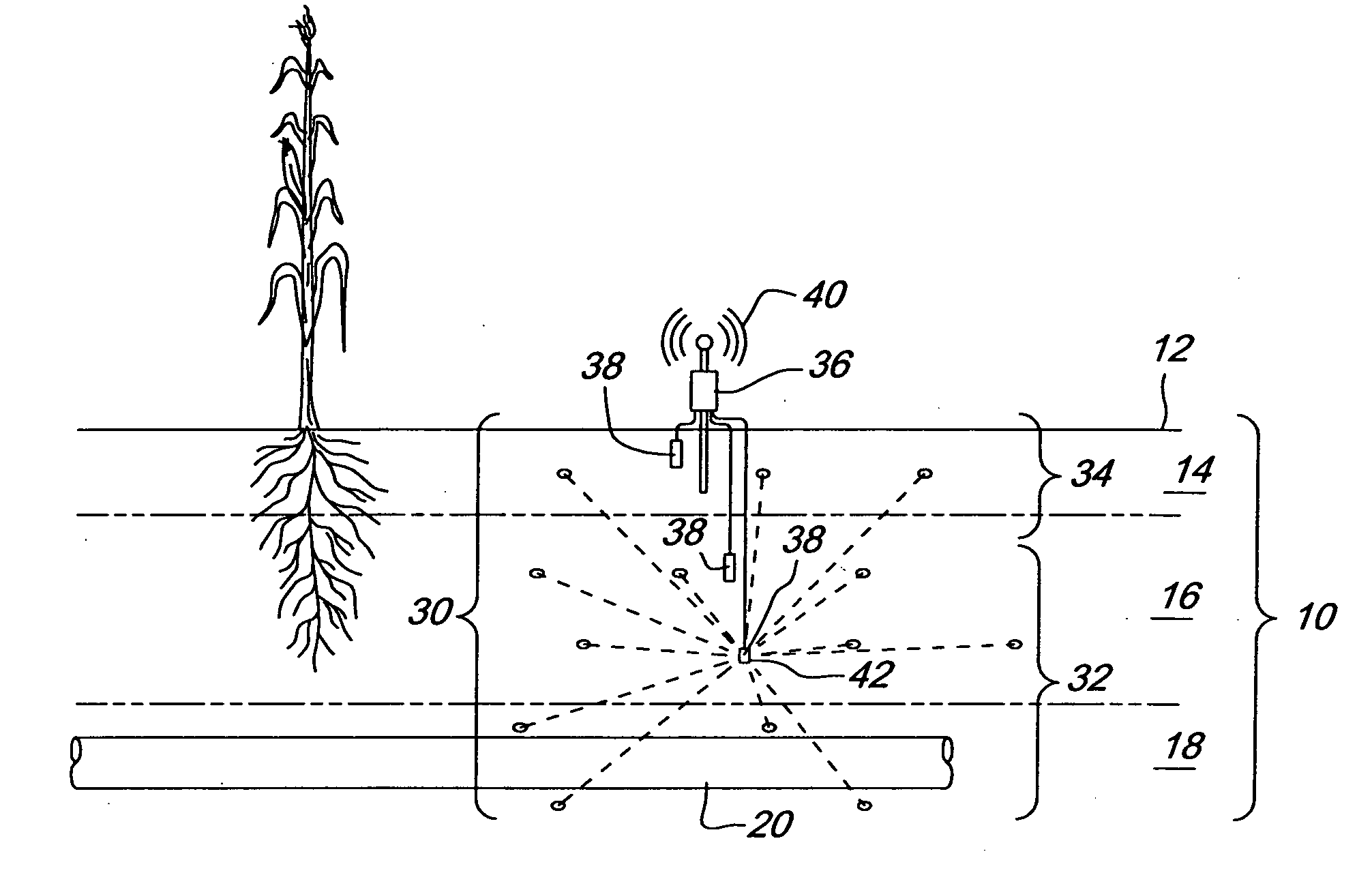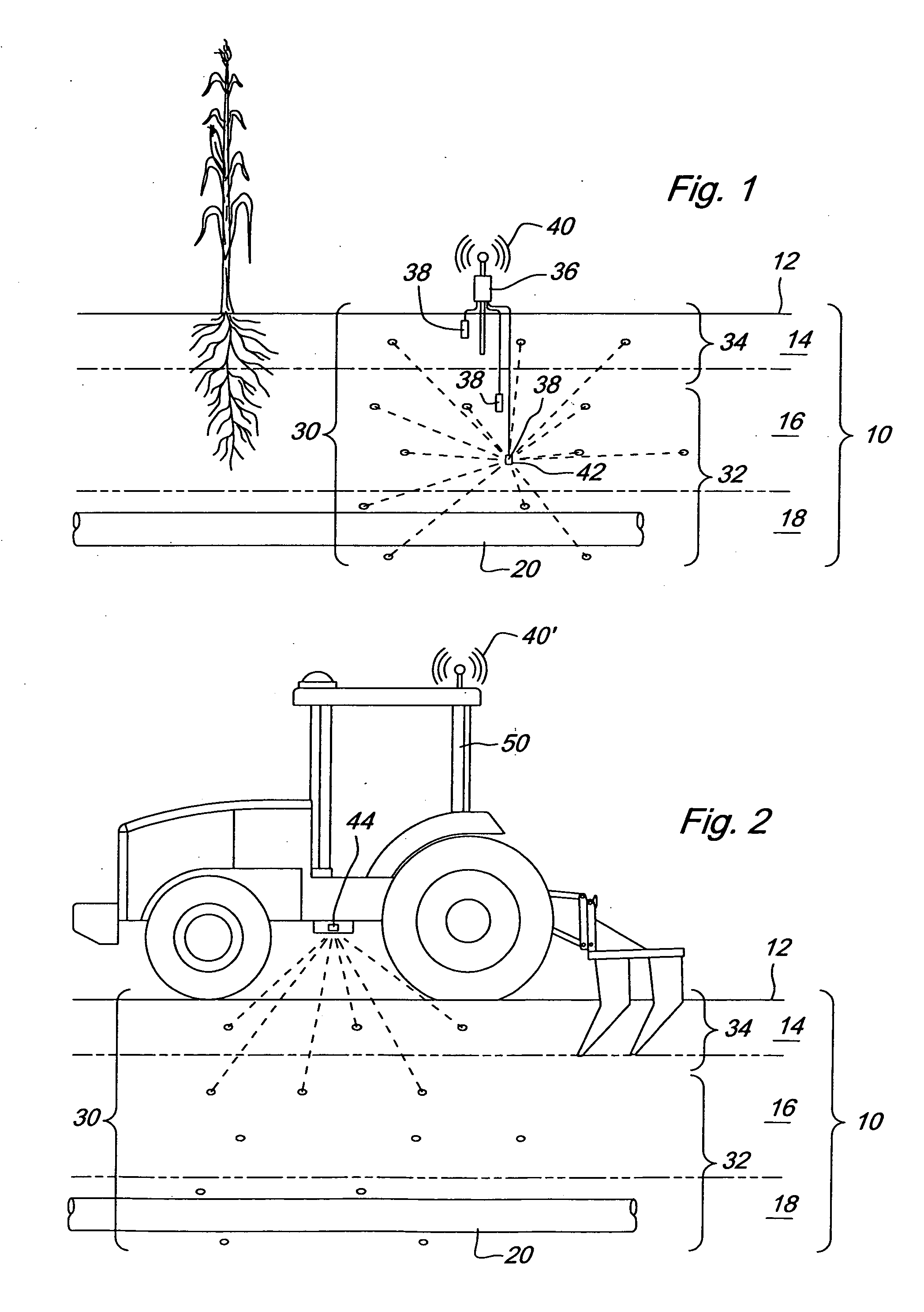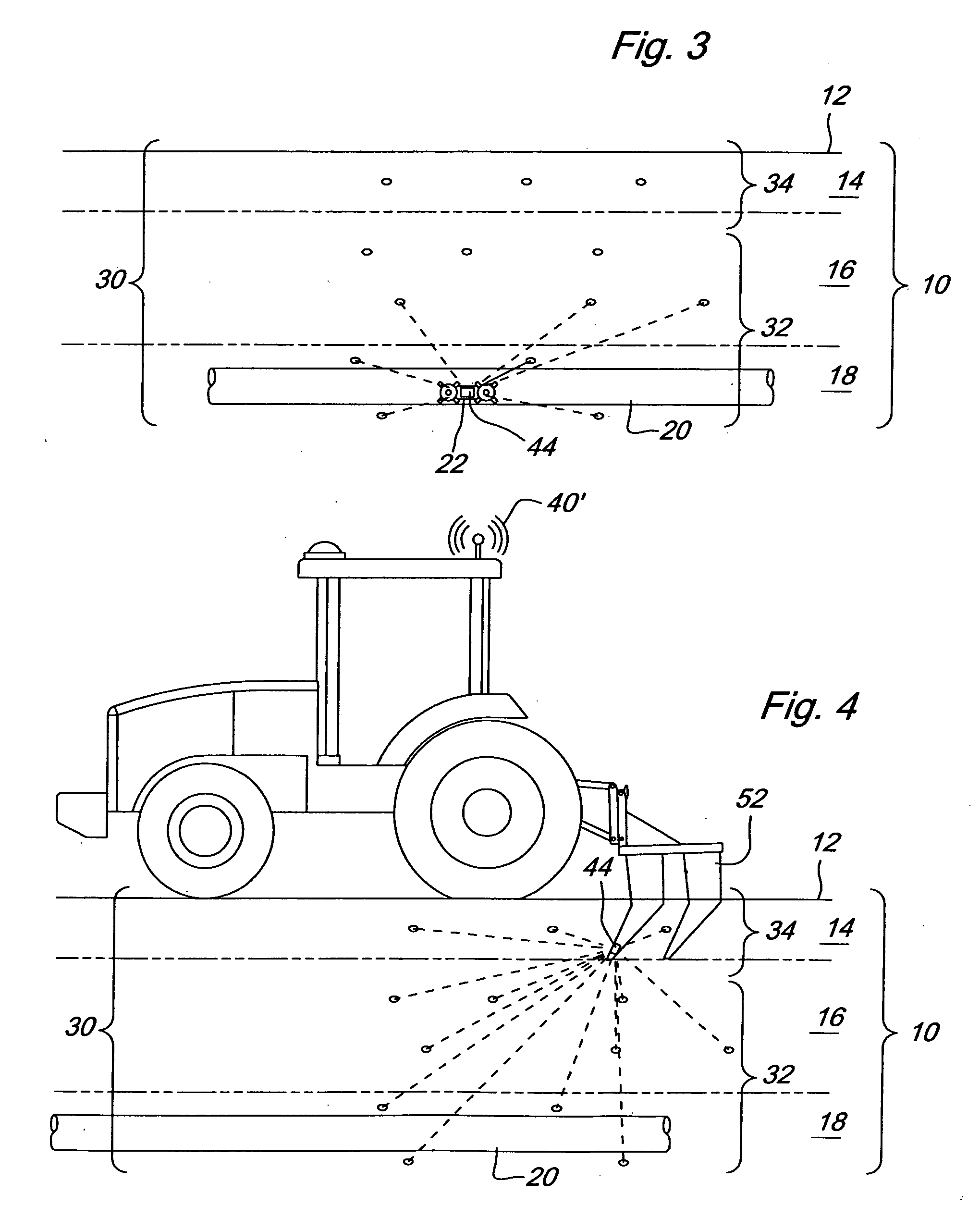Wireless subsoil sensor network
a sensor network and subsoil technology, applied in the field of soil sensors, can solve the problems of limited fidelity and economics of models used in production agriculture, and achieve the effect of high fidelity crop and soil modeling
- Summary
- Abstract
- Description
- Claims
- Application Information
AI Technical Summary
Benefits of technology
Problems solved by technology
Method used
Image
Examples
Embodiment Construction
[0011] For description of this invention, the soil 10 is split into four zones: surface 12, root zone (tilled) 14, root zone (sub-tilled) 16, and sub-root zone 18. The boundaries of these zones will vary from year to year based on the crop grown and the tillage practice for that year. All four soil zones are critical for modeling soils and crops since mechanical forces, water, and nutrients are applied to them at various points and sometimes change because of the system inputs. Another subsurface factor is drainage tile 20 which may be placed into the lower two zones and is a major factor in what happens to water and nutrients at those levels.
[0012] To be useful for high fidelity modeling, soil data must come from sensors that are localized in space and time, have suitable precision and accuracy of the attributes they measure, and have data which can be collected at suitable temporal and spatial resolution. The sensor network 30 must do these things economically so the data can hav...
PUM
 Login to View More
Login to View More Abstract
Description
Claims
Application Information
 Login to View More
Login to View More - R&D
- Intellectual Property
- Life Sciences
- Materials
- Tech Scout
- Unparalleled Data Quality
- Higher Quality Content
- 60% Fewer Hallucinations
Browse by: Latest US Patents, China's latest patents, Technical Efficacy Thesaurus, Application Domain, Technology Topic, Popular Technical Reports.
© 2025 PatSnap. All rights reserved.Legal|Privacy policy|Modern Slavery Act Transparency Statement|Sitemap|About US| Contact US: help@patsnap.com



